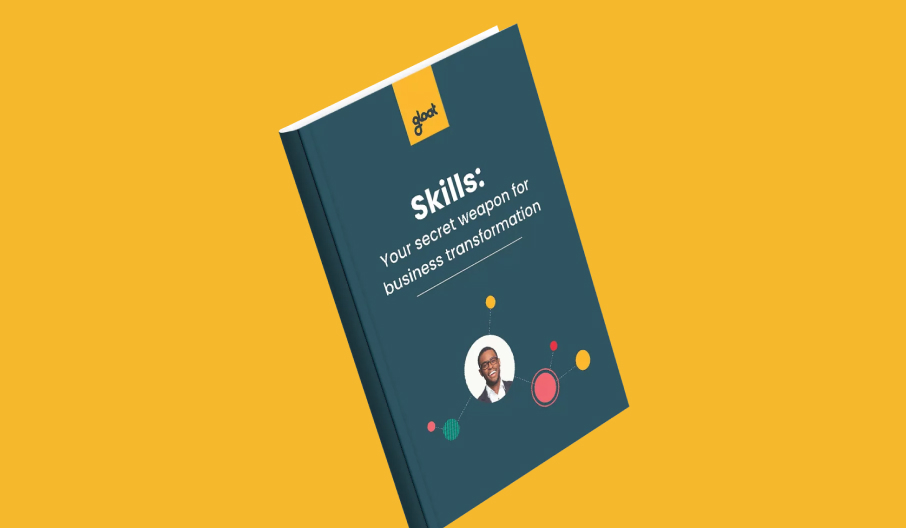From traditional to transformational: the rise of skills-based hiring
What is a skills-based hiring approach? As today’s organizations experience talent shortages and widening skills gaps, it’s become increasingly difficult to find qualified candidates for open roles. With 90% of organizations embracing skills-based strategies, hiring practices are shifting to reflect this. Instead of traditional hiring—which focuses on education, prior experiences, and job titles—an alternative recruiting

What is a skills-based hiring approach?
As today’s organizations experience talent shortages and widening skills gaps, it’s become increasingly difficult to find qualified candidates for open roles. With 90% of organizations embracing skills-based strategies, hiring practices are shifting to reflect this.
Instead of traditional hiring—which focuses on education, prior experiences, and job titles—an alternative recruiting method, skills-based hiring, is on the rise. To find the right candidates, skills-based hiring focuses on the capabilities that someone brings to the table, rather than their background or past experiences.
Why is skills-based hiring so effective?
There are some significant benefits associated with shifting to skills-based hiring. Using skills, rather than previous experiences, opens up the talent pool to candidates who may not have previously been considered for a certain role. In the US alone, a bachelor’s degree requirement eliminates 64% of working-age adults according to data from weforum.org. Rather than letting degree requirements shrink your talent pools, taking a skills-based approach enables managers to make hiring decisions based on each candidate’s unique set of competencies.
Prioritizing a skills-based approach can also provide more visibility into a candidate’s skills that might otherwise be overlooked, like skills that are leveraged in side hustles or personal interests. For example, someone may have coding experience even though they aren’t an engineer. Or, someone may have social media content creation skills even if they aren’t in a marketing role.
What makes skills-based hiring different from traditional recruitment?
While skills-based hiring focuses on what soft and hard skills a person has, traditional recruitment processes rely on education, degrees, and previous work experience to match talent to roles. Hiring based on skills has been shown to predict performance two times better than work experience and five times better than education.
Traditional hiring also focuses mainly on talent acquisition from outside the organization rather than fostering an internal-first mindset. Skills-first hiring can help prioritize your existing workforce by focusing on the transferable skills employees have that make them strong candidates for a role.
Skills-based hiring may also leverage technologies that enable recruiters to screen and evaluate candidates more efficiently. AI-powered technology can map skills to roles, making it easier to understand the criteria a recruiter is hiring for. It can also surface the required skills needed, whether they come from a person’s previous job experience, personal interests, education, or inferred transferable skills.
5 benefits of using skills-based hiring
1. Reduced time-to-hire
Now that 77% of companies are experiencing difficulty filling open roles, businesses need to start taking an internal-first approach that’s rooted in the capabilities their people have. Utilizing skills can help HR teams find talent, compare candidates, and match them to roles more efficiently.
2. Lower hiring costs
Reducing time-to-hire has the added benefit of lowering costs as the hiring process is streamlined and roles are filled faster. It eliminates some of the time and money it takes to advertise the role, source candidates, and complete the recruitment process. Skills-based hiring can also help lower costs by favoring internal talent, in turn reducing the amount of time it will take employees to get up to speed.
3. Increased workforce diversity
Traditional hiring favors degrees as a measure of qualification, eliminating millions of people from a role even if they have the skill sets the job requires. Skills-first hiring can help remove barriers to entry and open organizations to a more diverse talent pool.
4. Reduced mis-hires
Skills-based hiring also increases the likelihood of finding qualified candidates for the role. Utilizing this method of hiring, 92.5% of companies have seen a reduction in their mis-hire rate according to Forbes.
5. Increased engagement
It’s also been shown that skills-based hiring increases tenure and employee engagement. Two out of three people would leave a job where internal mobility was not offered, making internal hiring a key component to lasting employee satisfaction.
Why are more companies choosing to implement skills-based hiring processes?
Given the benefits, it’s easy to understand why HR teams are eager to implement skills-based recruitment. It provides a wider, more diverse talent pool, saves time and money, and is a great predictor of success within the role.
It’s also an important building block to support a company’s larger goal to become a skills-powered organization. By emphasizing skills as the unit of analysis in the hiring process, it paves the way for smarter talent management decisions throughout the entire organization.
How to measure the effectiveness of skills-based hiring in an organization
Before you implement your skills-based recruiting strategy, it’s important to decide what metrics to measure and understand where the organization currently is with them. Then, set goals based on organizational priorities and industry benchmarks. Having clearly defined metrics and methods to measure them will ensure progress is tracked accurately.
Some common benchmarks HR teams can measure while embracing skills-based hiring include time-to-hire, time-to-fill, hiring costs, and retention rate. Understanding and analyzing these data points will help HR improve skills-based hiring practices. It can also be a great starting point to demonstrate the value that skills can bring to the organization.
How will generative AI impact skills-based hiring?
Generative AI is not just a workplace trend, but rather a tool to help HR teams and organizations put skills-based practices into motion. It can help map skills to roles, making it easier to understand the qualifications you’re hiring for. AI-powered technology can also help analyze current skills and transferable skills cross-functionally to assist in finding internal candidates that would be a good fit.
Generative AI can help analyze current skills, highlight skill gaps, and connect the right people to the right roles, making skills the base of your workforce ecosystem. This allows organizations to keep up with the rapid pace of change, becoming proactive instead of reactive to transform at scale.
If you’re looking to learn more about how skills can transform your business, check out Skills: Your secret weapon for business transformation.





